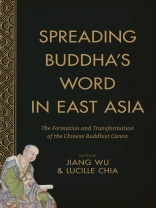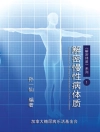A monumental work in the history of religion, the history of the book, the study of politics, and bibliographical research, this volume follows the making of the Chinese Buddhist canon from the fourth century to the digital era. Approaching the subject from a historical perspective, it ties the religious, social, and textual practices of canon formation to the development of East Asian Buddhist culture and enlivens Chinese Buddhist texts for readers interested in the evolution of Chinese writing and the Confucian and Daoist traditions.
The collection undertakes extensive readings of major scriptural catalogs from the early manuscript era as well as major printed editions, including the Kaibao Canon, Qisha Canon, Goryeo Canon, and Taisho Canon. Contributors add fascinating depth to such understudied issues as the historical process of compilation, textual manipulation, physical production and management, sponsorship, the dissemination of various editions, cultic activities surrounding the canon, and the canon’s reception in different East Asian societies. The Chinese Buddhist canon is one of the most enduring textual traditions in East Asian religion and culture, and through this exhaustive, multifaceted effort, an essential body of work becomes part of a new, versatile narrative of East Asian Buddhism that has far-reaching implications for world history.
Tabla de materias
Preface, by Lewis Lancaster
Acknowledgments
Conventions
Introduction, by Jiang Wu and Lucille Chia
Part I: Overview
1. The Chinese Buddhist Canon Through the Ages: Essential Categories and Critical Issues in the Study of a Textual Tradition, by Jiang Wu
2. From the ‘Cult of the Book’ to the ‘Cult of the Canon’: A Neglected Tradition in Chinese Buddhism, by Jiang Wu
Part II: The Formative Period
3. Notions and Visions of the Canon in Early Chinese Buddhism, by Stefano Zacchetti
4. Fei Changfang’s Lidai sanbao ji and Its Role in the Formation of the Chinese Buddhist Canon, by Tanya Storch
Part III: The Advent of Printing
5. The Birth of the First Printed Canon: The Kaibao Edition and Its Impact, by Jiang Wu, Lucille Chia, and Chen Zhichao
6. The Life and Afterlife of Qisha Canon, by Lucille Chia
7. Managing the Dharma Treasure: Collation, Carving, Printing, and Distribution of the Canon in Late Imperial China, by Darui Long
Part IV: The Canon Beyond China
8. Better Than the Original: The Creation of Goryeo Canon and the Formation of Giyang Pulgyo, by Jiang Wu and Ron Dziwenka
9. Taisho Canon: Devotion, Scholarship, and Nationalism in the Creation of the Modern Buddhist Canon in Japan, by Greg Wilkinson
Appendix 1. A Brief Survey of the Printed Editions of the Chinese Buddhist Canon, by Li Fuhua and He Mei
Appendix 2. The Creation of the CBETA Electronic Tripitaka Collection in Taiwan, by Aming Tu
Bibliography
List of Contributors
Index
Sobre el autor
Jiang Wu is professor of Chinese religion and thought in the Department of East Asian Studies at the University of Arizona. His research interests include Chinese Buddhism, especially Chan/Zen Buddhism and the Chinese Buddhist canon; Sino-Japanese Buddhist exchanges; and the application of GIS tools in the study of Chinese culture and religion. He is the author of Enlightenment in Dispute: The Reinvention of Chan Buddhism in Seventeenth-Century China and Leaving for the Rising Sun: Chinese Zen Master Yinyuan and the Authenticity Crisis in Early Modern East Asia.Lucille Chia is professor of history at the University of California at Riverside. Her research interests include Chinese book culture, most recently the history of Buddhist publishing in imperial China. She is the author of Printing for Profit: The Commercial Publishers of Jianyang, Song-Ming (960–1644) and coeditor of Knowledge and Text Production in an Age of Print: China, 900–1400.












